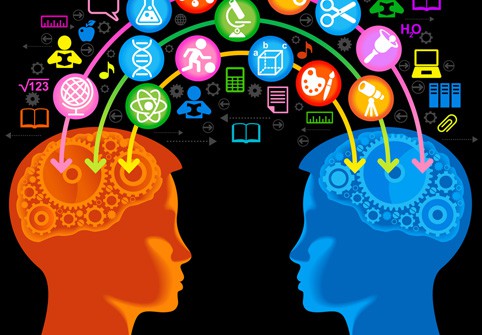Gamification: Accelerating Learning For Business & Education

By Daniel Burrus, CEO of Burrus Research and leading technology forecaster and business strategist
 Anyone who has children or who has been around them for a while knows that kids, as well as young adults, are attracted to video games like flies are attracted to light. And while older adults may think the kids are being lazy or using their time idly when they’re connected to their Wii or Xbox using a Kinect, in reality the kids are paving the way for business training and education.
Anyone who has children or who has been around them for a while knows that kids, as well as young adults, are attracted to video games like flies are attracted to light. And while older adults may think the kids are being lazy or using their time idly when they’re connected to their Wii or Xbox using a Kinect, in reality the kids are paving the way for business training and education.
How? It’s part of a future trend I first identified back in the 1980s that we are now calling gamification, and today that growing trend is reaching a tipping point. If you think back, you’ll see that many of the greatest technological advances in business have come from the world of kids and games. Actually, here’s the exact flow of events: a concept or technology often begins with kids and the world of gaming. Some will start with the military, but it’s amazing how many start with kids’ games. From there it gains the attention of the adults in the business community as they learn how to adapt it to their needs, and finally it creeps into the education sector. So in many respects, the adults and the business world can learn much from the kids and their video games.
To see the migration of how a concept goes from kids and games to adults and business, just look at the evolution of social media. At first, young people were the predominant ones on social media sites such as Twitter and Facebook. Adults simply didn’t see the value of social media. After all, who really cared what you had for lunch or what outfit someone wore to the dance. As adults eventually took more and more interest in social media, many companies made formal policies forbidding employees from using Twitter and Facebook at work. But now that the business world has seen the relevancy of social media and how it can be a brand management, marketing, and collaboration tool, they’re embracing it, some even going so far as creating their own internal versions of Twitter and Facebook.
Granted, video games and social media are different technologies, but the concept migration pattern is still the same. And with game controllers like the Wii and Xbox Kinect giving people new ways of interacting with technology, the business world is currently on the threshold of being game-ified.
For example, in the past, gaming was all about sitting in front of a computer or television screen and using a game pad, joystick, or keyboard playing against the computer or online opponent while sitting down—a passive activity. Thanks to the Nintendo Wii’s interactive nature, players stood up, got physically involved, and actually became a part of the game. Then Microsoft introduced the Kinect, which eliminates the need for a hand-held controller entirely. Players use their hand motions and body movements to manipulate the game.
Thanks to Microsoft releasing a software development kit for the Kinect that allows programmers to create new applications, university students started taking this gaming concept and writing software that allows users to control business software using just hand motions—no keyboard or mouse. An early example would be if you want to go to the next page, you do a sweep of your hand across the screen without touching anything. You can sweep to the left, sweep to the right, scroll up, scroll down, and many other things. Think back to the movie Minority Report where the police were able to maneuver data in the air without touching anything. Today, that’s rapidly becoming more fact than fiction.
The Core of Gamification
The heart of the gamification trend is using interactive gaming as a tool to transform training and education. Based on twenty-five years of research, I’ve identified five core elements that when applied together can dramatically accelerate learning. When you model your company’s training to include these five elements, your employees will learn more in less time and have better results. The five core elements are:
- Self-diagnostic. In the world of gaming, as you accomplish new feats and as your character gets better, the game gives you greater challenges. When you power down, the game remembers where you left off. When you return to the game, you still have your capabilities and all the things your character has previously learned. You don’t have to start over from ground zero. In the case of business training, if you learn something, there’s no need for a trainer to re-teach it to you. But how many times have you sat through a training session where you already learned a majority of the concepts yet you stayed so you could gain knowledge on a few key items? How much time did you waste? A better idea is for business training to have a self-diagnostic component. The interactive, competitive, and immersed module can know your skill or knowledge level and progress accordingly. It can know where you left off and give you next steps from that point when you log back in. This is the best way to allow for individual training and learning.
- Interactivity. For centuries, education and training have been, for the most part, passive experiences. Someone stands in front of a group and talks. The people being educated or trained sit and listen—taking a few notes here and there. If there is a lab, they will have some hands-on application, but application labs are not the norm in everyday education and training. As technology evolved, the trainer or teacher showed a movie or two to keep people involved, but in the end, the people learning just sat and watched. Regardless of someone’s inherent learning style, learning is much more effective when you’re interacting with the material, not passively sitting there. When you learn by gaming, you’re interacting with the information and concepts. You’re moving things around, you’re manipulating items, and you’re actually doing things. It’s no longer passive training. Now you are much more engaged and immersed.
- Immersion. We’ve seen 3D TVs where you have to wear special glasses to make the images pop out at you, but that’s because TVs have a lot of viewers sitting in a room spread out. When you’re playing a game on a small screen like a tablet or a smart phone, the viewing angle is such that you can have images appear 3D very easily without special glasses. In the recent past to the present, video games use interspatial 3D, where you go into worlds. So instead of images popping out at you, you go inside to them. That’s how games on the Xbox 360 and others have been working for years, by using a regular television set or flat panel display. This sort of technology gives an immersed effect, which engages people more. To apply this to business, if you’re training salespeople on a particular manufacturing tool they need to sell, why not have them see the tool in 3D and actually get to virtually manipulate the tool rather than have them read spec sheets about it? The former will give them more insight to the tool, which will make selling it easier.
- Competition. Humans are naturally competitive beings. We want to sell more, be more productive, innovate faster, and be smarter than the next person. When you’re sitting in class learning, there’s little competitive value. You’re all there for the entire timeframe whether you’ve learned the materials in one hour or three. No one advances until the class is over. However, when you’re competing, as in a game, there’s an adrenaline rush that keeps you engaged and focused on the task at hand. In an effort to “win,” people master concepts faster so they can be first…and certainly not last.
- Focus. When you’re playing a game, you’re forced to focus. You have to do A in order for B to occur. If you don’t do A, then you won’t get far in the game. Focus is the result of interactivity, competition, immersion, and self-diagnosis. When you can focus, you can learn virtually anything…fast.
Accelerate Learning
Using all five core elements is a key to accelerating learning. With more and more to learn, it will be increasingly important to gamify both business and education to create better results faster. Those companies and school districts that adopt early will be the long-term winners. So here’s your homework assignment: Get together with a kid and play one of their games. While you’re playing, think Wii or Kinect for business. Think of the five core elements and how you could reinvent learning with tools like these. Since businesses spend large sums of money on training and education, any tool that can accelerate or enhance learning will save both time and dollars.



Homework Help
Nice post Daniel, I would like to add one more element to the core of gamification. Achievement or Rewards is a vital aspect of any game, in a game if you kill a monster you get some reward for your effort, this principle of immediate gratification is vital to keep someone stuck to the game. And this should work well in the learning environment as well, by keeping short objectives and rewarding for achieving the objective would help keep the participant continue with the learning proces
Dr. Bruce A. Johnson
Hello Daniel:
I thoroughly enjoyed your article and found it intellectually stimulating and thought-provoking. It helped to inspire my writing today and you are mentioned in my post that will be out on Monday morning:
Why Students Can Benefit from Playing Games in College
http://www.onlinecollegecourses.com/2012/06/18/why-students-can-benefit-from-playing-games-in-college/
Dr. J
Sayalee
Very apt article. I liked the core of gamification part. Thanks.